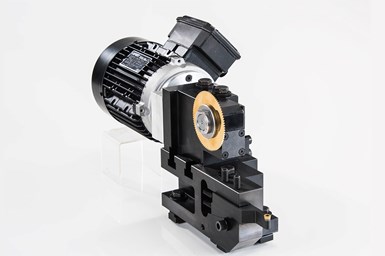Converting to Rotary Saws for Improved Productivity
PMTS 2023: With Watkins RSC, manufacturers can save material, get more parts per bar and eliminate stringy chips.
Watkins Manufacturing developed Rotary Saw Cutting (RSC) to eliminate the inherent problems associated with single-point cutting, such as stringy chips, slow feed rates, cutoff times, constant tool adjustments, excess kerf and wasted material. It also helps alleviate the need for secondary machining to deal with nibs, burrs and rough surfaces.
RSC is said to eliminate those problems while also improving the quality of the parts being produced and increasing production and efficiency. Watkins says it took a necessary operation and made it more profitable. With RSC, surfaces are smoother, length tolerances are tighter and repeatable, and the quality of the part is improved significantly, which is a distinct advantage in quality control.
Converting to RSC is said to enable more production capacity from every machine and increase machine efficiency for more profit per machine. It can also reduce Kerf as narrower cutoff generates more parts. The RSCs can eliminate material and process waste to get Leaner and Greener.
Users can machine higher quality parts, reduce or eliminate the need for secondary machining, and results in no stringy chips. The process is easy and efficient for operators, and companies can see an immediate ROI of of 70-300%
RCS can boosts a variety of operations, including rough forming, straddle-milling, grooving, trimming, slitting and slotting. flat mill and cross-drill. It can also fit a variety of machines.
Related Content
-
Starting Small with Automation
Quick-change workholding and flexible robotic automation started this small shop on the path to success.
-
The Value of Tool Monitoring on Rotary Transfer Machines
By using a tool monitoring system, shops can save costs associated with machine maintenance and downtime for tool changes while increasing cutting performance.
-
Parting Off: The Case for Standardizing on Sawing
The value of rotary saw cutting for parting off operations could boil down to simple economics paired with process efficiency gains.













.png;maxWidth=300;quality=90)



